Returning from the fierce war against the US, along with the days of "fighting" with a stroke, Mr. Nguyen Van Tai (72 years old, veteran) was left with a traumatic injury to his right arm, causing it to shrink and lose sensation. For many years, his left arm has been the only support to support him in all his daily activities.
However, recently, he began to feel pain, numbness and weakness in his left arm. He decided to go to the doctor when the symptoms became more and more obvious, causing him to have difficulty moving.
The results of 2560-slice CT scan - modern imaging diagnostic technology at Hong Ngoc General Hospital clearly showed two complex lesions.
First, his left subclavian artery (the main blood vessel supplying blood to the arm, located at the base of the neck, just below the collarbone) was blocked for a length of 40mm.
Second, he also has 80% narrowing of the right coronary artery, the main blood vessel that nourishes the heart, always putting him at risk of a heart attack.
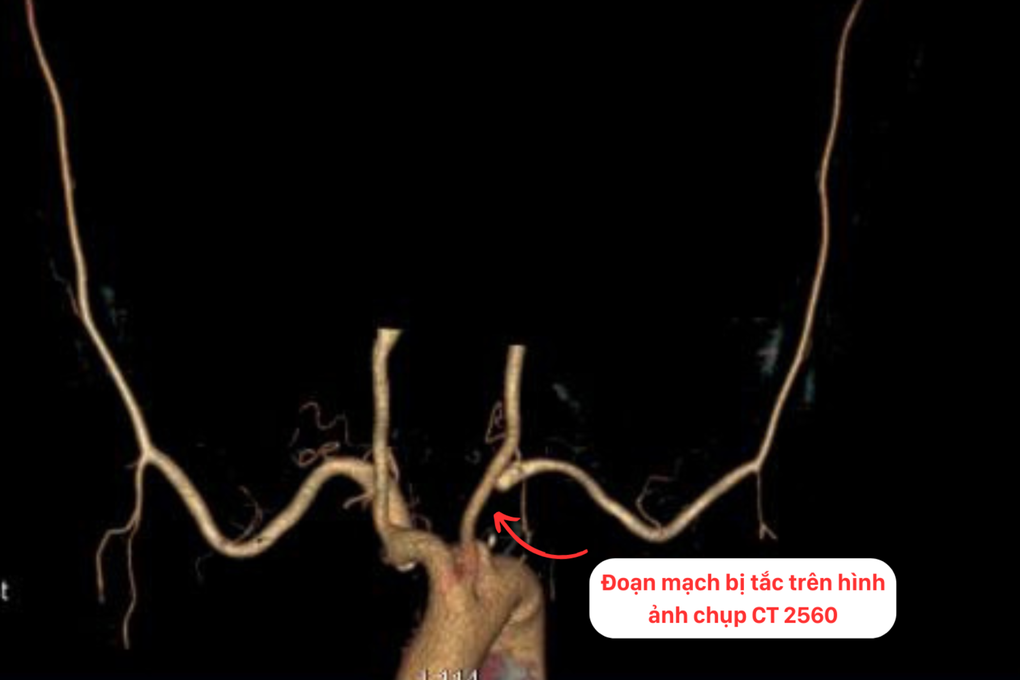
The blocked artery is clearly recorded on the 2560-slice CT scan image (Photo: BVCC).
Faced with a serious blockage, the doctor ordered stent placement in two locations: the right coronary artery to help promptly restore blood flow to the heart, and the left subclavian artery to restore motor function for the patient.
However, the intervention faced many difficulties because Mr. Tai was in poor health, old, and had many complicated underlying diseases such as severe heart failure, diabetes, dyslipidemia, and a history of stroke. To ensure maximum safety, the treatment team developed a personalized protocol, dividing the intervention process into two phases. This approach not only helps the patient recover after each procedure, but also avoids the risks of performing two complex interventions at the same time.
In addition, dividing into smaller sections also allows doctors to closely monitor the recovery status, thereby evaluating the effectiveness after each intervention and flexibly adjusting the treatment plan for the next phase in the most optimal way.
In the first phase, priority is given to stent placement to re-open the right coronary artery. This is a vital principle to protect heart function, prevent the risk of myocardial infarction in time, and especially ensure the heart is strong enough to withstand the second intervention.
After 1 month of stenting the right coronary artery, Mr. Tai entered the second intervention, which was also the biggest challenge - stenting the left subclavian artery. Assessing the complexity of this second intervention, Master, Doctor Nguyen Van Hai - Head of the Cardiology - Interventional Cardiology Department, Hong Ngoc Phuc Truong Minh General Hospital said: "It is very difficult to insert the interventional instrument to access the blocked artery because the blockage is located near the root of the artery with many calcified and atherosclerotic plaques. If the operation is not done correctly, it will lead to the risk of arterial dissection and perforation at any time."
Therefore, in order to increase the ability to access the exact blockage site, the team was ready to plan both antegrade (from the right femoral artery) to the blockage site and retrograde (from the left radial artery - a branch of the blood vessel in the arm) to the blockage site from the far side. Preparing these two access strategies in parallel not only helps the doctor flexibly switch the plan when necessary but also increases the ability to access the blocked vessel from both sides. Thereby, controlling the path of the interventional instrument well, minimizing the risk of damage to the vessel wall and shortening the procedure time.
Thanks to that, the intervention team successfully placed a special stent that is large in size, has good durability, can withstand high pressure during movement and has a protective layer to prevent restenosis, helping to restore blood circulation to Mr. Tai's arm.
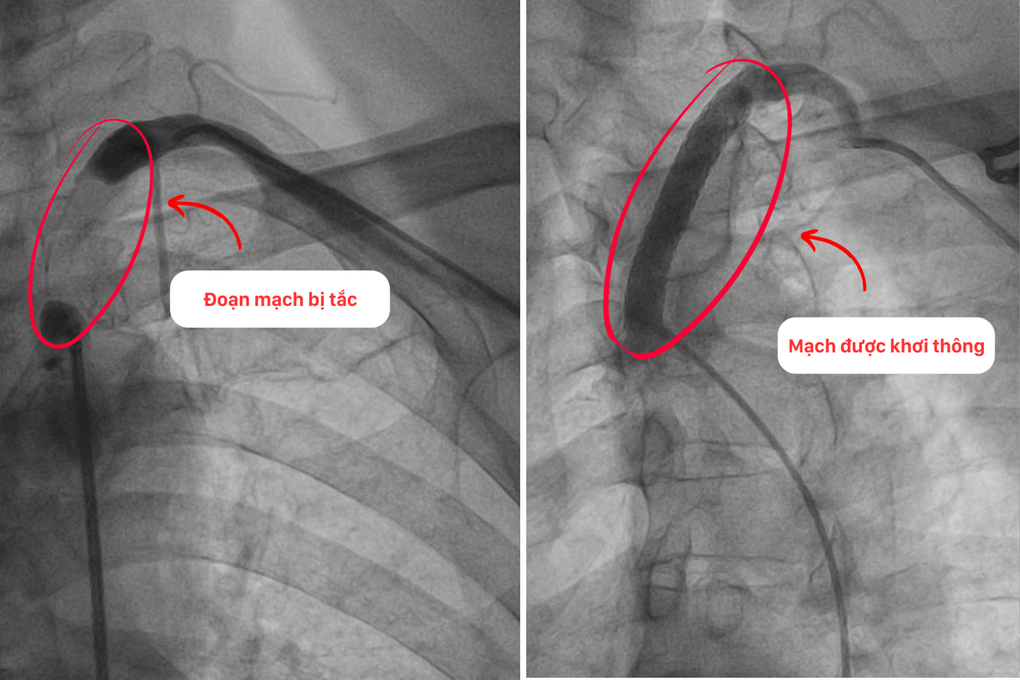
Mr. Tai's blood vessels before and after intervention (Photo: BVCC).
After two interventions, Mr. Tai's health recovered well, his heart failure condition improved significantly, his heart rate and blood pressure stabilized. In particular, right after the second intervention, Mr. Tai's left hand gradually warmed up, became rosy and moved more comfortably, reducing the feeling of pain and numbness.

Doctor Hai checked Mr. Tai's health after the intervention (Photo: BVCC).
When his father's left arm was revived, Mr. Tai's son choked up and said: "I thought there was no hope of my father's arm moving again. Thank you, doctors, for helping to encourage my father's spirit to live, helping him to live more conveniently and easily in life."
In order to facilitate the elderly to access high-quality medical services at reasonable costs, Hong Ngoc General Hospital implements a policy of paying the maximum health insurance limit for cardiovascular interventions combined with incentives exclusively for people over 60 years old.
Contact details:
- No. 8 Chau Van Liem Street, Tu Liem Ward, Hanoi
- No. 55 Yen Ninh Street, Ba Dinh Ward, Hanoi
Hotline: 0911 858 626
Source: https://dantri.com.vn/suc-khoe/hoi-sinh-canh-tay-bi-tac-dong-mach-cho-cuu-chien-binh-20250819195638592.htm


![[Photo] Solemn opening of the 12th Military Party Congress for the 2025-2030 term](https://vphoto.vietnam.vn/thumb/1200x675/vietnam/resource/IMAGE/2025/9/30/2cd383b3130d41a1a4b5ace0d5eb989d)

![[Photo] Panorama of the cable-stayed bridge, the final bottleneck of the Ben Luc-Long Thanh expressway](https://vphoto.vietnam.vn/thumb/1200x675/vietnam/resource/IMAGE/2025/9/30/391fdf21025541d6b2f092e49a17243f)
![[Photo] President Luong Cuong receives President of the Cuban National Assembly Esteban Lazo Hernandez](https://vphoto.vietnam.vn/thumb/1200x675/vietnam/resource/IMAGE/2025/9/30/4d38932911c24f6ea1936252bd5427fa)
![[Photo] The 1st Congress of Phu Tho Provincial Party Committee, term 2025-2030](https://vphoto.vietnam.vn/thumb/1200x675/vietnam/resource/IMAGE/2025/9/30/1507da06216649bba8a1ce6251816820)
![[Photo] General Secretary To Lam, Secretary of the Central Military Commission attends the 12th Party Congress of the Army](https://vphoto.vietnam.vn/thumb/1200x675/vietnam/resource/IMAGE/2025/9/30/9b63aaa37ddb472ead84e3870a8ae825)





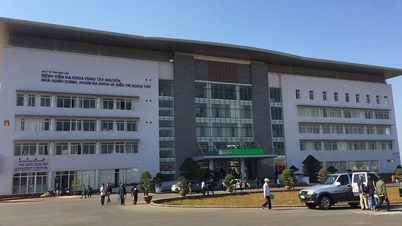

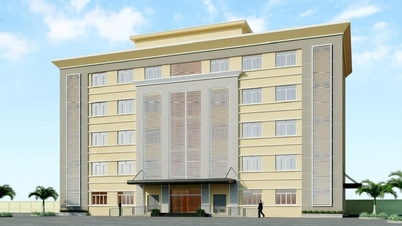


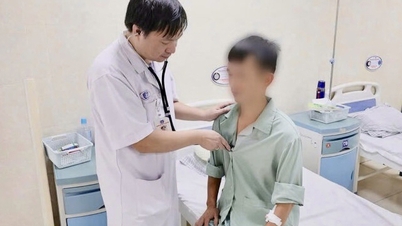



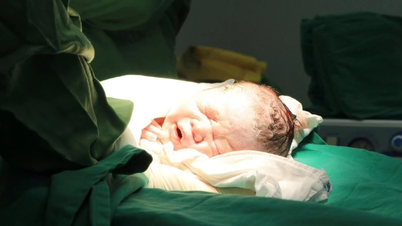

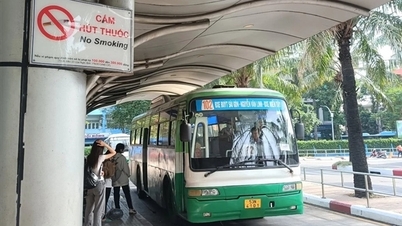

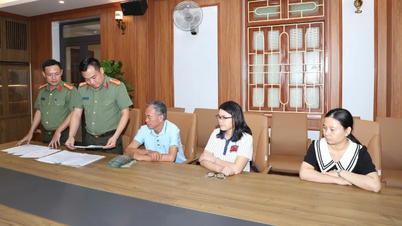





































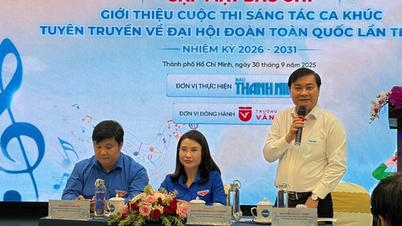


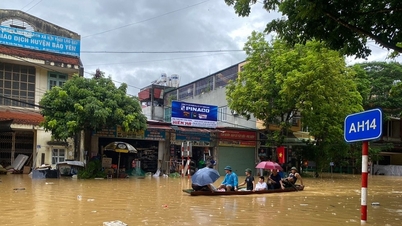











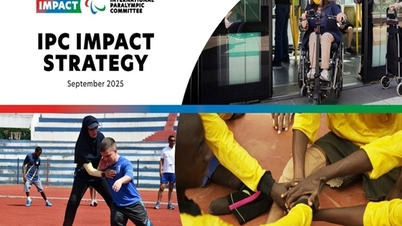



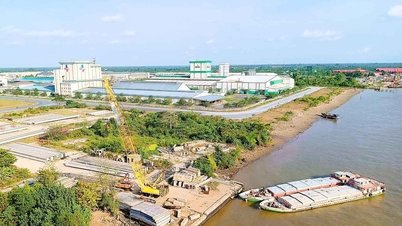
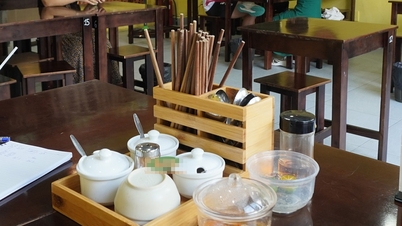

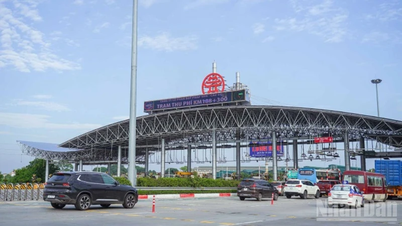
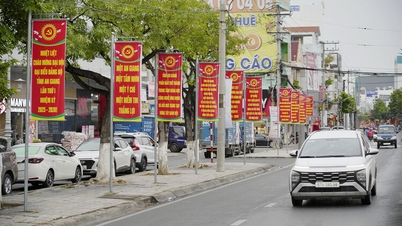















Comment (0)